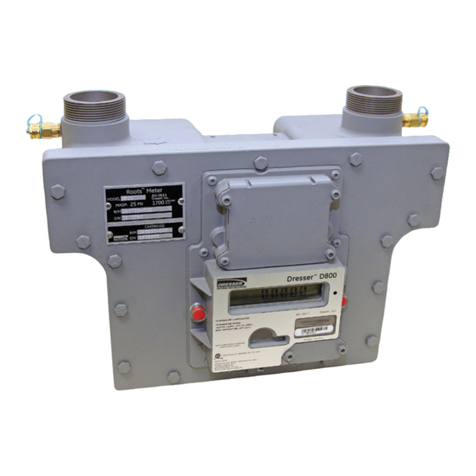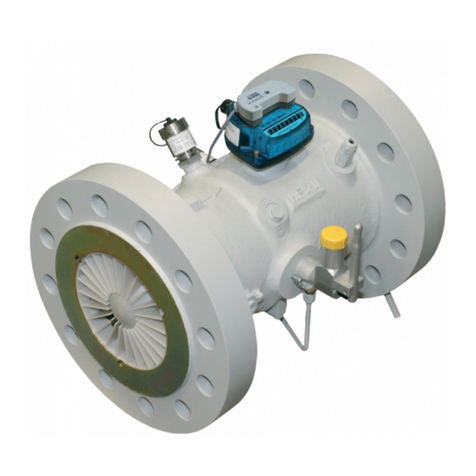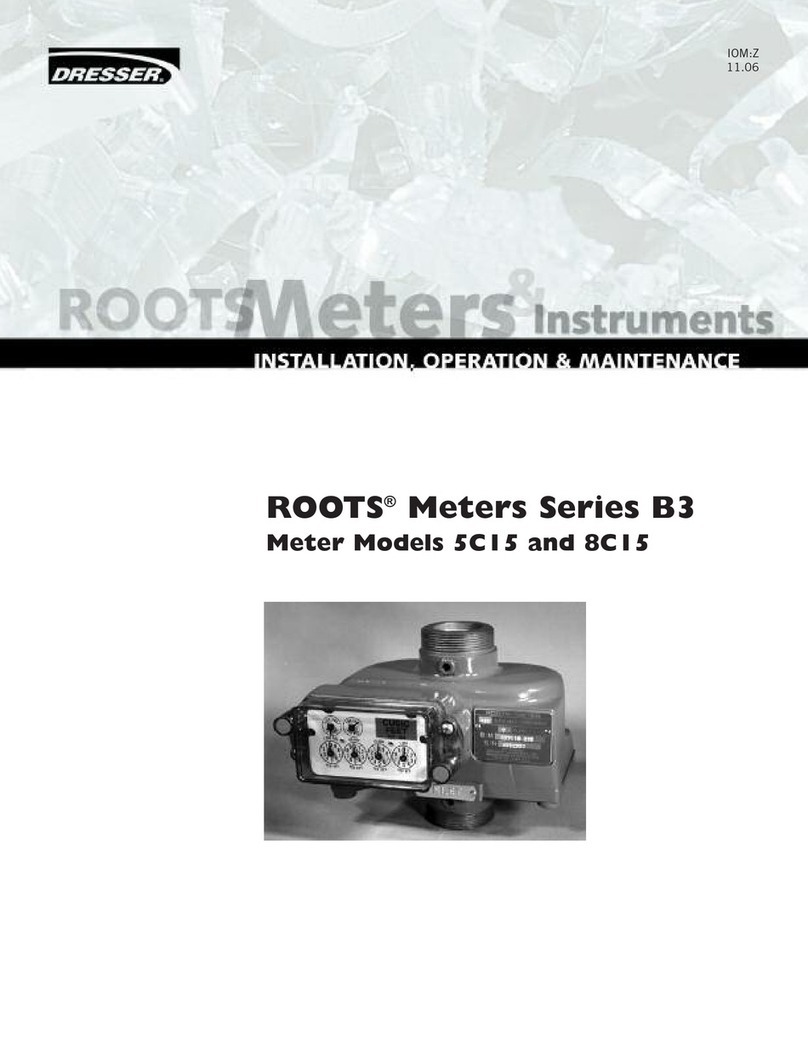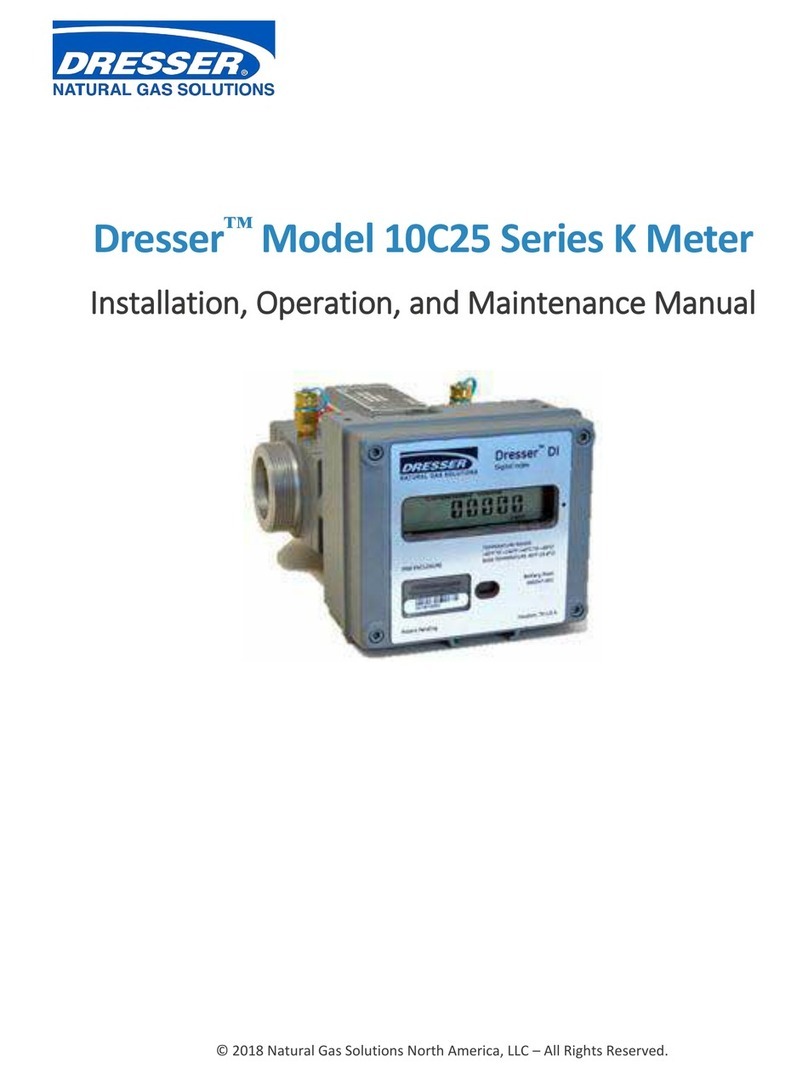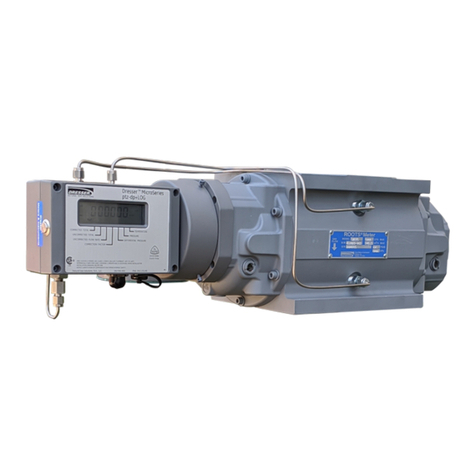
10
3.3.2 Choix du lubrifiant
Viscosité : la viscosité a été calculée pour assurer la meilleure
performance mécanique et métrologique du compteur.
Références commerciales : L’annexe 2 contient une liste de
lubrifiants du commerce. Ils peuvent être utilisés pour les
gaz industriels, à l’exception des gaz tels qu’oxygène et ha-
logènes. En cas d’utilisation avec d’autres gaz, veuillez nous
consulter.
3.3.3 Remplissage et vidange
Voir l’annexe 3 pour l’emplacement des bouchons de rem-
plissage, de vidange et des voyants de niveau de lubrifiant.
Avant l’installation: Les opérations de remplissage et de
vidange doivent être effectuées lorsque le compteur est
installé sur la conduite, sans pression. L’utilisation de Pete’s
Plugs permet de réaliser les niveaux de lubrifiant alors que le
compteur est sous pression (jusqu’à 20 bars). Voir l’annexe7.
Les niveaux de lubrifiant doivent être effectués dans les car-
ters avant et arrière sauf pour le Delta Conpact, SE, Evo et le
S1-Flow pour lesquels seul le niveau dans le carter avant est
à réaliser.
Comment effectuer la mise à niveau de lubrifiant:
Cas général: Le niveau est correct quand il atteint le centre
du voyant placé le plus bas.
Compteurs en acier: Le bouchon de niveau “L” est utilisé
comme trop plein.
• DN50 S1-Flow: Le niveau s´effectue uniquement dans le
carter avant. 4 bouchons “F” ou “D” sont à utiliser pour rem-
plir ou vidanger le carter; le bouchon placé le plus bas sert
à vidanger. En fonction de l´orientation du compteur le
niveau “L1” ou “L2” doit être dévissé avant le remplissage.
Le lubrifiant est injecté dans “F” jusqu´à ce qu´il déborde
par le niveau “L”; seul le niveau placé le plus bas est à utiliser
pour faire la mise à niveau.
4 Accessoires
4.1 Accessoires électriques
Instructions pour l’utilisation en atmosphères potentielle-
ment explosives (ATEX) :
• Les émetteurs d‘impulsions ne doivent être raccordés qu‘à
des appareils homologués de sécurité intrinsèque suivant
l‘EN 60079-0 et l’EN 60079-11.
• Nettoyer le totalisateur uniquement avec un chiffon hu-
mide.
• La surface extérieure des pièces en aluminium situées dans
les environs immédiats du compteur doit être protégée
par un traitement adéquat (par exemple peinture) si une
pellicule oxydée peut s‘y déposer.
• Le compteur doit être pris en compte dans l´évaluation du
risque de foudre de l´ensemble de l´installation.
• Pour le montage, démontage ou réparation sur site du
compteur, uniquement des outils autorisés d‘emploi en
zone explosive peuvent être utilisés.
• Le compteur ne doit pas être exposé aux flammes, radia-
tions ionisantes, ultrasons ou à des champs électromagné-
tiques puissants.
4.1.1 Emetteur basse fréquence (équipement
standard)
Le compteur est livré avec un double émetteur d’impulsions
à basse fréquence. L´émetteur BF est constitué d´une am-
poule Reed à contact sec normalement ouvert. Le schéma
de câblage est indiqué sur la plaque signalétique du comp-
teur. Voir aussi l’annexe 4 pour de plus amples informations.
4.1.2 Surveillance de ligne
Le compteur est livré en standard avec un contact de sur-
veillance de ligne. Il s’agit d’une ampoule Reed à contact sec
normalement fermé. Le schéma de câblage est indiqué sur
la plaque signalétique du compteur.
4.1.3 Capteur Cyble
Le capteur Cyble peut être installé à n´importe quel moment
sur le totalisateur, voir l´annexe 4. Le capteur Cyble est un
émetteur d´impulsion sans rebond qui permet aussi de
prendre en compte les débits inverses éventuels.
4.1.4 Emetteurs à moyenne & haute fréquence
(disponible en option)
Le compteur peut être livré avec des émetteurs à moyenne
ou haute fréquence, de type inductif. Le branchement s’ef-
fectue sur un appareil possédant un circuit d´entrée de type
NAMUR (EN 60947-5-6).
4.2 Joint filtre
Pour les compteurs équipés de brides, un joint filtre peut
être inséré directement en amont du compteur à la place
du joint d’étanchéité standard. Ce filtre protège le compteur
contre les impuretés restantes dans la tubulure amont. Il est
recommandé de le retirer après 4 à 8 semaines d´utilisation.
4.3 Cartouche silicagel externe
Le compteur peut être équipé en option d’une cartouche sili-
cagel externe pour les installations dans les environnements
difficiles. Pour remplacer la cartouche, dévisser l’ancienne,
enlever l’opercule de protection de la nouvelle et la revisser
dans le totalisateur.
4.4 Limiteurs de débit
Il est recommandé d’utiliser des limiteurs de débit afin de
protéger le compteur contre des surpressions qui seraient
provoquées par une conception perfectible de l’installation.
5 Mise en service
5.1 Généralités
La procédure de mise en service dépend toujours de la confi-
guration de l’installation. Avant de mettre le compteur sous
pression, le niveau de lubrifiant doit être effectué. La pressuri-
sation ou dépressurisation doit être effectuée graduellement
: 0.3 bars / 5 P.S.I. par seconde au maximum.
Après mise en service, l’étanchéité de l’installation doit être
vérifiée.

